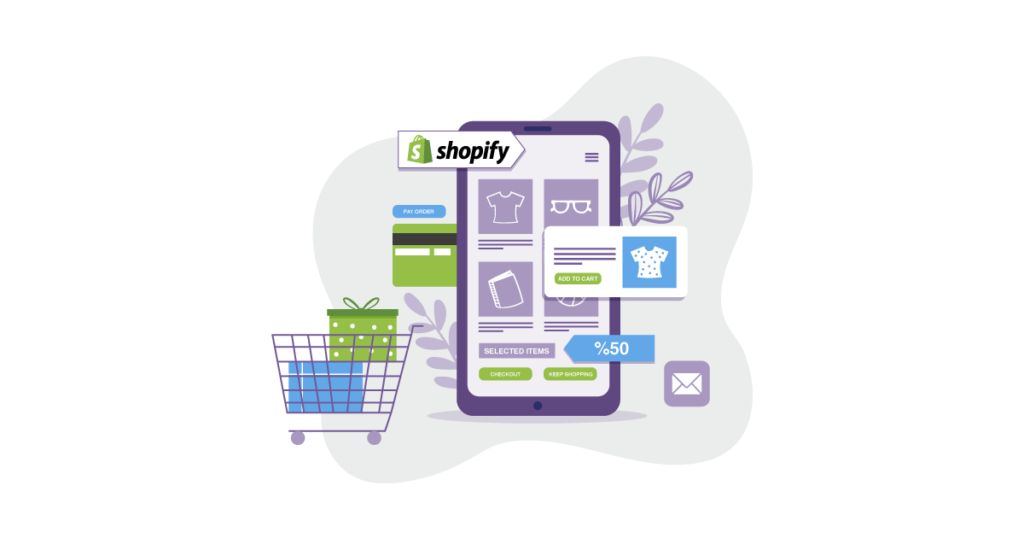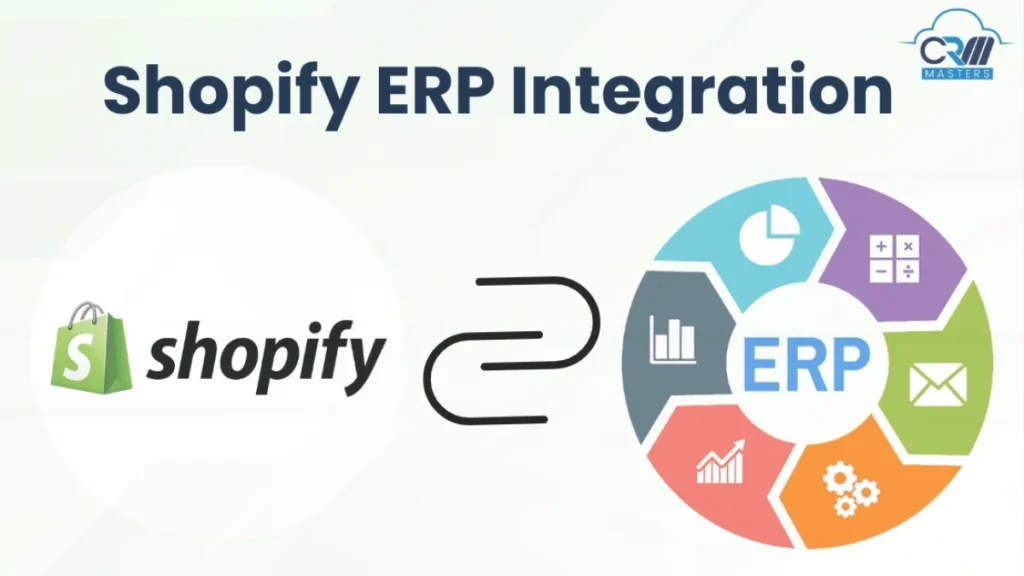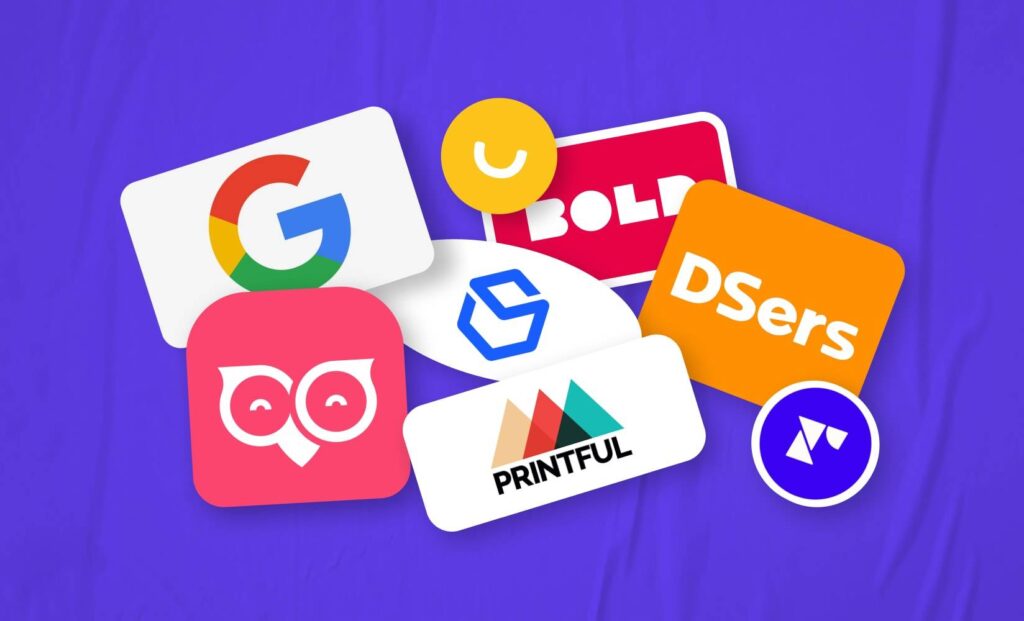Table of Contents
Leading e-commerce platform Shopify Integrations has completely changed how companies conduct business online. It provides a whole range of services and solutions that enable business owners to launch, run, and expand their online storefronts. The complexity of Shopify’s systems, software, and smooth interface with Point of Sale (POS) and Enterprise Resource Planning (ERP) software will all be covered in detail in this guide. Regardless of the level of experience in e-commerce, this investigation will offer insightful knowledge about Shopify and how it can propel your company’s growth.
Shopify integration

It refers to connecting Shopify with other software systems, such as accounting software, inventory management tools, or marketing platforms. This integration allows for seamless data flow between these systems, streamlining business processes, reducing manual data entry, and improving overall efficiency. By integrating Shopify with complementary tools, businesses can gain valuable insights, automate tasks, and enhance their customer experience.
It offers a variety of Shopify integration options to cater to different business needs. Here are some common types:
App integration
Direct integration: This entails connecting to third-party apps or creating bespoke integrations using Shopify’s API. Although it needs technical expertise, it gives the greatest versatility.
Integration with the App Store: A sizable ecosystem of ready-made apps is available in Shopify’s App Store, and they may be quickly linked with your store. These apps often offer specific functionalities, such as shipping, marketing, or accounting.
Theme integrations
refer to customizing and extending the functionality of a Shopify theme to match specific business requirements. This can involve modifying the theme’s design, layout, or adding new features. By integrating with third-party apps or writing custom code, businesses can create unique and personalized online store experiences that align with their brand and customer preferences. Theme integrations can enhance the overall look and feel of a Shopify store, improve user experience, and drive conversions.
Sales channel integrations
It allows businesses to seamlessly connect their Shopify stores with multiple sales channels, such as marketplaces, social media platforms, and physical stores. This enables them to expand their reach, increase sales, and provide a consistent customer experience across all channels. By integrating sales channels with Shopify, businesses can manage inventory, orders, and customer information centrally, streamlining their operations and maximizing their sales potential.
Custom API integrations
It refers to creating a unique connection between your Shopify store and other software systems. This type of integration is tailored to your specific business needs and can involve building custom code or using specialized tools. Custom integrations offer the highest level of flexibility, allowing you to automate complex workflows, synchronize data seamlessly, and integrate with proprietary systems that may not have pre-built connectors. However, custom integrations can be more time-consuming and resource-intensive to develop and maintain compared to off-the-shelf solutions.
POS integrations
It allows for seamless synchronization of data between your online store and physical point-of-sale systems. This integration ensures that inventory levels, customer information, and sales data are consistent across both channels. By integrating your POS system with Shopify, you can streamline operations, enhance customer experience, and gain valuable insights into your overall business performance.
Shopify ERP Integration

Enterprise Resource Planning (ERP) systems in Shopify integration are essential for managing various aspects of a business, including finance, inventory, human resources, and customer relationship management (CRM). Integrating Shopify with an ERP system can significantly enhance your business efficiency and provide valuable insights.
There are several types, such as
Custom ERP integration
Custom ERP integration in Shopify integration involves tailoring an ERP system to seamlessly integrate with Shopify’s specific functionalities. This allows for a more personalized and efficient solution that aligns with your unique business requirements. By customizing the ERP integration, you can optimize data flow, automate processes, and gain deeper insights into your online store’s performance.
Cloud Integration solution (iPaaS)
These are platforms that enable businesses to connect various cloud-based applications and on premise systems. They provide a centralized hub for managing integrations, automating workflows, and ensuring data consistency across different systems. iPaaS solutions often offer pre-built connectors, drag-and-drop interfaces, and robust security features, making it easier for businesses to integrate their technology stack without requiring extensive technical expertise.
Third-party integrator apps
Third-party integrator apps are software applications that facilitate seamless integration between Shopify and other systems. These apps often provide pre-built connectors and functionalities, making it easier to connect Shopify with various tools such as accounting software, marketing platforms, or shipping carriers. By using third-party integrator apps, businesses can automate tasks, streamline workflows, and improve overall efficiency.
Benefits of Shopify integrations
Real-time data synchronization: Make sure that the client database, order details, and inventory amounts are identical on both platforms.
Better order fulfilment: When orders are placed on Shopify, your ERP system should automatically adjust inventory levels, lowering the possibility of stock outs or overselling.
Improved financial management: For precise accounting, automate the transmission of sales data from Shopify to your ERP system, streamlining financial procedures.
Improved client support: Utilize both platforms’ client data and order histories to offer individualized help and effectively handle problems.
Reporting that is more efficient: Create thorough reports for Shopify and your ERP system to obtain insightful information about the operation of your company.
Shopify POS Integration

physical point-of-sale systems and online business can synchronize seamlessly with Shopify POS integration. Consistency in inventory levels, customer data, and sales information is guaranteed by this linkage between the two channels. You may improve customer satisfaction, expedite processes, and obtain insightful data about the overall performance of your business by connecting your point-of-sale system with Shopify. Here are some of types are below
Order fulfilment simplifies the process of completing orders for sales made both offline and online.
Email marketing: Establishes a closer connection with customers by segmenting them based on their past purchases.
Analytics and reporting: Provides insights into customer behavior, sales performance, and inventory trends Organizes and maintains inventory
Product bundling and discounts: Provides bundling and product discounts. Returns: Manages the return process
Payroll: Uses sales data to automatically calculate employee wages.
Benefits
Streamlined operations: Seamlessly manage both your online and physical stores from a single platform.
Enhanced inventory management: Ensure consistent inventory levels across both channels, preventing stockouts or overselling.
Improved customer experience: Provide a unified customer experience, allowing customers to browse products online and purchase them in-store, or vice versa.
Enhanced analytics: Gain valuable insights into your business performance by tracking sales, customer behavior, and inventory levels.
Increased efficiency: Automate tasks and reduce manual data entry, saving time and improving productivity.
How Shopify and ERP are integrated

Integrating Shopify with an Enterprise Resource Planning (ERP) system can significantly streamline your business operations and provide valuable insights. By connecting these two systems, you can ensure real-time data synchronization, automate order processing, improve financial management, enhance customer service, and generate comprehensive reports. This integration typically involves data synchronization, order management, financial management, CRM integration, and reporting and analytics.
Integration Methods:
API Integration: Use Shopify’s API to build custom integrations or connect to third-party ERP systems.
App Store Integration: Utilize pre-built apps from the Shopify App Store that offer integration capabilities with popular ERP systems.
Cloud-Based Integration Platforms: Leverage cloud-based platforms to connect Shopify and your ERP system, simplifying the integration process.
How Shopify and POS are integrated ?
Shopify POS is a powerful tool that allows you to manage both your online and physical store from a single platform. By integrating your Shopify store with a compatible POS system, you can streamline your operations, enhance customer experience, and gain valuable insights into your business performance.
Popular Shopify POS Systems:
- Shopify Hardware: Shopify offers its own hardware solutions, including the Shopify POS Go and Shopify POS Pro, which are designed to work seamlessly with the Shopify platform.
- Third-Party POS Systems: There are many third-party POS systems that integrate with Shopify, such as Square, Vend, and Light speed.
Business Operations in Shopify integrations with POS and ERP
POS System Integration and ERP System Integration are essential for businesses looking to streamline their operations and improve efficiency. POS systems integrate with physical stores, allowing for seamless management of inventory, sales, and customer data. ERP systems, on the other hand, provide a comprehensive solution for managing various aspects of a business, including finance, inventory, human resources, and customer relationship management. By integrating both POS and ERP systems, businesses can create a unified platform that streamlines processes, enhances customer experience, and provides valuable insights into their overall performance.
Final words
Shopify integration in your business systems, such as ERP and POS solutions, can significantly enhance your operations and drive growth. By leveraging the power of these integrations, you can streamline processes, improve efficiency, and provide a superior customer experience.